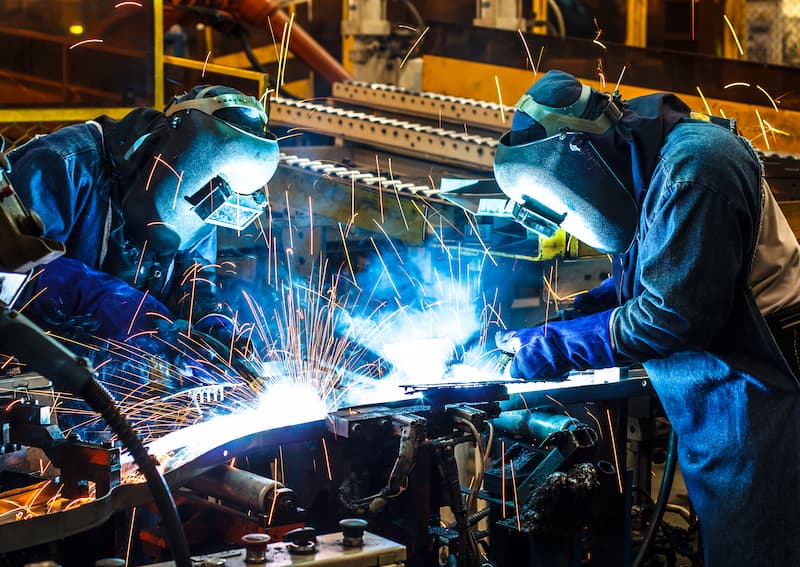The Importance of Welding WPS: Making Certain Top Quality and Safety And Security in Your Jobs
The Importance of Welding WPS: Making Certain Top Quality and Safety And Security in Your Jobs
Blog Article
The Ultimate Guide to Welding WPS Procedures: A Comprehensive Review for Welders
In the intricate globe of welding, Welding Treatment Specifications (WPS) offer as the foundation of making certain high quality, consistency, and security in welding procedures. Understanding the nuances of producing, implementing, and monitoring WPS treatments is crucial for welders aiming to elevate their craft and meet market standards. As we dive into the numerous components of a WPS and explore the complexities of qualification and certification, we will discover the vital function these treatments play in the realm of welding. Allow's embark on a trip to unravel the intricacies and value of WPS procedures in welding methods.
Value of WPS Procedures
Understanding the value of Welding Procedure Specifications (WPS) procedures is vital for making certain the high quality and honesty of welded frameworks. WPS treatments function as a roadmap for welders, detailing the necessary steps, parameters, and materials called for to accomplish a sound weld. By sticking to WPS standards, welders can make sure uniformity in their job, resulting in structurally audio and reliable welds.
One of the main factors why WPS procedures are essential is their role in keeping weld high quality and integrity. Adhering to the specified welding criteria and techniques described in the WPS helps avoid flaws such as porosity, splitting, or incomplete combination, which can endanger the stamina and toughness of the weld.

Elements of a WPS
A Welding Procedure Spec (WPS) normally consists of vital parts that information the specific demands for implementing a weld, guaranteeing uniformity and quality in the welding procedure. The crucial parts of a WPS consist of vital variables such as base metals, filler steels, preheat and interpass temperature levels, welding processes, shielding gases, welding placements, and post-weld warm therapy needs.
Base metals describe the materials being signed up with, while filler metals are utilized to load the void in between the base steels throughout welding. Preheat and interpass temperatures are essential for managing the heat input and stopping concerns like fracturing or distortion. The welding process details the specific technique to be utilized, whether it's gas metal arc welding (GMAW), protected steel arc welding (SMAW), or an additional approach. Shielding gases safeguard the weld pool from atmospheric contamination. Welding placements define the orientations in which welding can be carried out. Post-weld heat treatment may be necessary to soothe tensions and enhance the weld's homes. An extensive understanding of these elements is crucial for creating a comprehensive and effective WPS.

Certification and Qualification
Having actually established the vital elements of a Welding Treatment Spec (WPS), the focus now shifts towards the vital elements of certification and certification in welding techniques.

Accreditation, on the various other hand, is the formal acknowledgment of a welder's credentials by a relevant accreditation body or company. Welding qualifications are usually based upon the specific welding processes, products, and settings a welder is qualified to collaborate with. Holding a legitimate welding certification demonstrates that a welder meets market requirements and is proficient to execute welding tasks to the needed specs.
Developing a WPS
To develop a Welding Treatment Requirements (WPS) that fulfills market criteria, careful factor to consider of welding processes, materials, and functional parameters is necessary (welding WPS). The primary step in developing a WPS is to identify the welding procedure to be used, such as gas metal arc welding (GMAW) or shielded steel arc welding (SMAW) Once the welding process is identified, the next important element is choosing the proper materials, taking into consideration factors like base steel kind, density, and joint layout. Operational criteria such as welding existing, voltage, travel rate, and protecting gas composition should likewise be diligently defined in the WPS.

Applying and Monitoring WPS
Upon completing the extensive Welding Treatment Specification (WPS) that thoroughly information welding processes, products, operational parameters, and quality guarantee actions, the emphasis changes to effectively carrying out and keeping track of the established procedures. Application involves making certain that all welders entailed in the job are acquainted with the WPS and follow it diligently during the welding procedure. Efficient application and monitoring of the WPS are vital for making certain the integrity, stamina, and safety of the welded joints, ultimately contributing to the general success of the welding task.
Conclusion
In final thought, understanding and following Welding Procedure blog Requirements (WPS) is important for welders to ensure top quality, consistency, and safety in their job. By understanding the components of a WPS, acquiring go appropriate credentials and certifications, creating thorough treatments, and executing and monitoring them efficiently, welders can improve their abilities and efficiency in welding techniques. Complying with WPS procedures is essential for generating premium welds and meeting sector requirements.
In the detailed world of welding, Welding Procedure Requirements (WPS) serve as the foundation of guaranteeing high quality, consistency, and security in welding procedures. The welding procedure describes the details technique to be utilized, whether it's gas steel arc welding (GMAW), secured steel arc welding (SMAW), or one more approach.To establish a Welding Treatment Spec (WPS) that satisfies industry standards, cautious consideration of welding procedures, materials, and operational specifications is necessary. The very first action in developing a WPS is to determine the welding procedure to be made use of, such as gas steel arc welding (GMAW) or protected steel arc welding (SMAW)Upon completing the comprehensive Welding Procedure Requirements (WPS) that carefully details welding processes, materials, More about the author functional criteria, and top quality guarantee measures, the emphasis shifts to efficiently implementing and keeping an eye on the recognized treatments.
Report this page